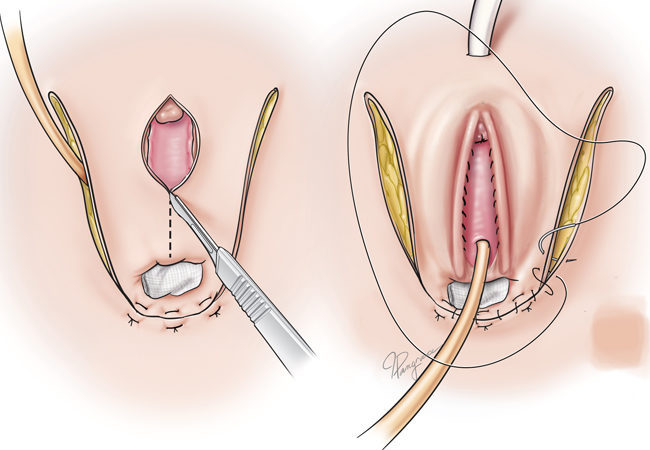Gender affirming surgery (sometimes called sex reassignment or gender confirming surgery) is surgery to affirm a person’s gender identity. Most people believe that arranging the money for sex change surgery is the only thing you need to remember before your surgery. But in reality, there is a long checklist that you would have to follow before your sex change surgery. Hence the first and the biggest preparation tip for you is to select the right Gender change surgeon.overall there are some preparation before sex change surgery like:
- It is suggested that you should wear loose clothes, not just that, bring a lot of loose clothes with you.
- avoid wearing nail polish, lotions, perfume, and many more such things.
- make sure that you follow all the guidelines and diet-related things from your doctor.
- Several medicines will be prescribed to you by your doctor before the surgery, with the help of which the overall surgical process can get better.
- There are a few important things and documents that you should bring with you whenever you are visiting for your surgery; some of those items are your identification proof, health insurance details, medicines or medical conditions that you have been facing till now, family members with you, as after the surgery you would not be able to do your daily tasks by yourself.
At the end by preparing yourself for your Sex Change surgery, you can enhance the results after surgery. Hence make sure to follow all the tips mentioned.
Table of Contents
ToggleWhat is sex reassignment surgery?
Sex reassignment surgery refers to procedures that help people transition to their self-identified gender. Today, many people prefer to use the terms gender affirmation or confirmation surgery.
Surgery is just one option for gender affirming care. All trans and gender diverse people are unique and will choose to affirm their gender in a way that feels right for them.
Gender affirming care might include:
- Social affirmation, such as changing names, pronouns, hair or clothing.
- Legal affirmation, such as changing legal name or gender.
- Medical affirmation, with hormones or surgery.

Why is gender affirmation surgery done?
People may have surgery so that their physical body matches their gender identity. People who choose gender affirmation surgery do so because they experience gender dysphoria. Gender dysphoria is the distress that occurs when your sex assigned at birth does not match your gender identity.
What kind if medical procedures are available?
There are many different gender affirming surgeries and procedures. They may include making changes to your face, chest, genitals, or other body parts.
For people assumed male at birth, feminising surgeries may include:
- Breast augmentation with insertion of breast implants.
- Facial feminisation — changing the shape of any or all facial features.
- Vocal surgery — shortening the vocal cords for a higher, more feminine voice.
- Tracheal shave — reducing the size of the ‘Adam’s apple’.
- Fillers or liposuction, to achieve a more typically feminine shape.
- Orchiectomy, or removal of testicles.
- Bottom surgery or ‘genital reconfiguration surgery’, involving changes to the genitals.
Bottom surgery is called ‘genital reconfiguration surgery’. This was previously known as ‘sex reassignment surgery’ or ‘gender confirmation surgery’. The name change shows that your genitals don’t define your sex or gender.
Feminising bottom surgery may involve a combination of the following procedures:
- Removing the testicles (orchiectomy).
- Removing and reshaping tissue from the penis to make a vulva. This includes external labia or lips, and a clitoris. This is known as vulvoplasty.
- Shortening the urethra (tube that you urinate — wee — from).
- Creation of a vaginal canal (vaginoplasty). This is a complicated step which some people choose to skip. After surgery, vaginal dilators will need to be used to maintain the shape of the vaginal canal.
For people assumed female at birth, masculinising surgeries may include:
- Top surgery, with reduction or removal of breast tissue (mastectomy). This creates a flatter or more neutral chest. There are many different techniques used to achieve this.
- Liposuction to achieve a more typically masculine shape.
- Hysterectomy, or removal of the uterus (womb) and ovaries.
- Bottom surgery or genital reconfiguration surgery. This involves changes to the genitals.
Masculinising bottom surgery may involve a combination of the following procedures:
- Hysterectomy, if not already performed.
- Vaginectomy, or removal of the vagina.
- Creation of a penis, which may include metoidioplasty or phalloplasty.
- Metoidioplasty involves making a penis shape wrapping tissue around the clitoris after it is enlarged by testosterone hormone therapy.
- Phalloplasty involves making a larger penis with tissue from the arm, thigh, back, or abdomen. This involves lengthening the urethra to be able to urinate from the tip of the new penis. An inflatable penile implant may be inserted inside the penis to allow an erection.

Is gender affirming surgery right for me?
Choosing to undergo any surgery is a big decision. Everyone affirms their gender in different ways, and that may or may not include surgery.
Surgery is permanent so you need to make sure it’s the right choice for you. Surgery doesn’t make you more or less trans.
Most people who have surgery are happy with their results and feel more comfortable in their bodies. But some people are disappointed with the results, or find that any gender dysphoria that was present is not fully resolved. Make sure you discuss any difficult feelings with your doctor or psychologist.
What questions should I ask before surgery?
It’s important to talk about the pros and cons of surgery in detail with your doctor. It’s a good idea to ask to see pictures of how other people look after surgery.
Questions to ask your surgeon include:
- What different surgical techniques are there?
- What are the pros and cons of each technique for me?
- What results can I expect?
- What are the possible risks and complications?
Requirements For Gender Reassignment Surgery
Gender affirmation surgery is a big step in your journey towards your true self. It is important to note there are a few mandatory requirements that must be met:
- Before surgery you will need a letter from your Psychiatrist (or therapist) stating you are of sound mind and good judgment.
- Sign consent forms.
- Receive pre- and post-operative instructions and take forms to your primary care doctor for medical clearance.

Can I still have children after gender affirmation surgery?
Many transgender individuals choose to undergo fertility preservation before their gender affirmation surgery if having biological children is part of their long-term goals. Discuss all your options, such as sperm banking and egg freezing, with your doctor so that you can create the best plan for future family building.
How is sex affirming surgery satisfactory?
In a study which was done on patients who had undergone a vaginoplasty at the Urology Group of Southern California and Sinclair Plastic Surgery between 2016 and 2019, result below were achieved:
- Over half of the participants engaged in sexual activity less than once a month (55.2%, n=16), whereas eight (27.6%) engaged one to three times a week and five (17.3%) more than three times a week.
- Out of the 29 women who responded, 12 (41%) indicated it was always easy to get sexually aroused. Nine (31%) stated it was mostly easy, for seven (21.4%), it was seldom easy, and for one woman, it was never easy.
- 65.5% of women were now able to find sexual activity more pleasurable; only six (20.7%) women found it to be less pleasurable and four (13.8%) experienced no difference in pleasurability.

Satisfaction of General Sex Life After Surgery
Initial preparation for Transgender surgery:
What to Wear
Since you will be going to the hospital for the surgery, you want to wear comfortable, loose-fitting clothes that are easy to remove. You will change into a hospital gown once you arrive and are in the preoperative room.
Avoid wearing:
- Makeup
- Jewelry
- Perfumes
- Lotions
- Nail polish
- Hairspray
- Valuables
What to Bring
Your surgical team will let you know what to bring to prepare for the procedure. In general, you will need:2
- Driver’s license or identification card
- Health insurance card and information
- List of all your medications
- Change of clothes
- Personal toiletries
- Contact information for family, friends, and loved ones
Hair Removal
You may need permanent hair removal for some procedures like transfeminine or transmasculine bottom surgery. You can have either electrolysis or laser hair removal.
Are there other ways I need to prepare?
It is very important to prepare mentally for your surgery. If you haven’t already done so, talk to people who have undergone gender affirmation surgeries or read first-hand accounts. If you have questions about whether something applies to your individual care, it is always best to talk to your doctor.
You will also want to think about your recovery plan post-surgery. Do you have friends or family who can help care for you in the days after your surgery? Having a support system is vital to your continued health both right after surgery and long term.
In an initial intake interview via phone with a clinical specialist you need:
- Medications. Information about which prescriptions and over-the-counter medications you are currently taking.
- Insurance. Call your insurance company and find out if your surgery is a “covered benefit” and what their requirements are for you to have surgery.
- Medical Documents. Have at hand the name, address, and contact information for any clinician you see on a regular basis. This includes your primary care clinician, therapists or psychiatrists, and other health specialist you interact with such as a cardiologist or neurologist.

Conclusion
Preparing for transgender surgery requires time and effort, as well as mental fortitude. It can be a long process getting to surgery, so you should be mentally and physically ready for this. Your surgical team will discuss in detail what you need to do prior to surgery, and you can ask as many questions as you need to feel comfortable.
Before your surgery, you should feel completely prepared and have all your arrangements in place. This is a good time to reach out to friends, family, and loved ones for help and support. They should be aware of the preparations you need to make and participate in the process.

Iran is the only Islamic country where the sex reassignment surgery (SRS) is recognized. Many European citizens travel to this Middle East country for gender confirmation and reassignment surgery.for more information about how and where to do the procedure and if you need counseling about sex reassignment surgery you can be in touch with use through Mediranco health tourism company website mediranco.com

This article was written by Seyed Mostafa Zamani,Medical Stager.

